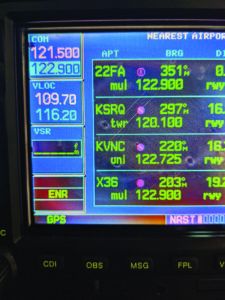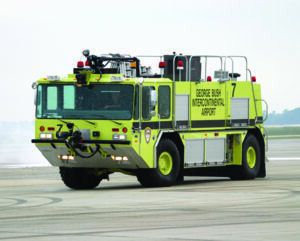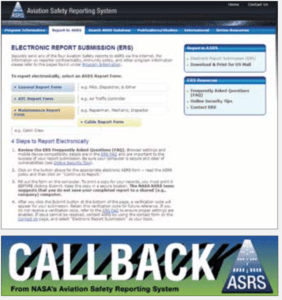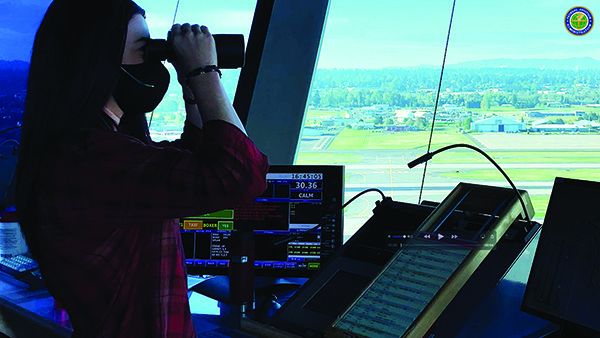I was recently listening to AOPA’s podcast There I Was… during my drive to work. For those who are not aware, it’s a podcast that invites us into the cockpit of aviators as they encounter unpredictable situations, and we learn from their experience to improve our own skills and aeronautical decision-making. After all, it is a lot cheaper to learn from others’ experiences and mistakes over going out and making them ourselves, right?
What inspired me to write this article was something I heard in three different episodes. Long story short, three different pilots were in situations that absolutely warranted declaring emergencies but elected not to do so. One that jumped out at me was a piston single with intermittent engine issues that ended up sequenced behind a regional jet and was lucky to walk away after the engine quit.
It seems all three pilots had reservations about declaring. My impression is that there are three big reasons why people do not declare emergencies: paperwork, fear of retribution or investigation from the FAA, and concern about inconveniencing others. Learning a bit about the process may help to dispel some of those concerns.

What are your options for declaring an emergency? In addition to squawking 7700, 7600 or 7500, there are several methods to communicate your status with ATC.
Frequency
If you are already on flight following or under ATC control, you can declare directly with whoever you are currently controlled by. Otherwise, your quickest option for getting a response and assistance is 121.5.
Your airplane probably has a method of getting to this frequency quickly. For example, in every Garmin GPS I have used, holding the frequency swap button for a few seconds will swap the primary frequency to 121.5 MHz.
What to say
The most common word is “Mayday,” usually stated three times. The AIM does recognize “Pan-Pan-Pan” as well, to state urgency but not distress. Stating either will get the same result from ATC.
Minimum Fuel
Additionally, you can communicate something called “minimum fuel.” This is recognition by the pilot that the fuel supply has reached a state where, upon reaching the destination, the pilot cannot accept any undue delay. This is not an emergency situation but merely an advisory that indicates an emergency situation is possible should any undue delay occur.
WHAT’S AN EMERGENCY?
Emergencies (according to the FAA) can largely be classified under two definitions: distress or urgency condition. Here are both definitions, straight from the horse’s mouth:
Distress is defined as a condition of being threatened by serious and/or imminent danger and requiring immediate assistance. Urgency is defined as a condition of being concerned about safety and requiring timely but not immediate assistance; a potential distress condition.
Typically, pilots do declare when they are in distress, but hesitate when in an urgency condition. This is where we start to venture into gray areas. When exactly does your circumstance enter urgency? Luckily, the FAA defines this too!
An aircraft is in an urgency condition the moment that the pilot becomes doubtful about position, fuel endurance, weather, or any other condition that could adversely affect flight safety. The time for a pilot to request assistance is when an urgent situation may, or has just occurred, not after it has developed into a distress situation.
It is impossible to define every situation that constitutes an emergency because every situation is unique. For example, a bona fide emergency icing encounter for a Skyhawk pilot could be merely routine light icing for a 737 flight crew.

I’ve had one genuine emergency while airborne, and declared it to ATC without hesitation. I didn’t know it at the time, but my Debonair’s #5 cylinder swallowed most of its intake valve, setting up a partial power loss. I definitely declared the emergency. As it happened, I was well within gliding distance of a 12,000-foot-long runway and had to make two 360-degree turns to get down. After declaring, I got busy, of course, and I don’t remember any other chatter on the frequency except the controller working me. The equipment rolled and followed along as we slowly taxied to the ramp under what was left of our own power.
The other time, I had initiated a descent from 9000 feet in a 150-hp Cessna 172 when the engine coughed. I don’t remember if I had applied carburetor heat before reducing power—I probably should have—but I made sure it was full on and didn’t declare. Instead, I told ATC the engine had coughed and asked if there were any airports nearby other than my destination. The controller pointed out an Interstate highway, but the situation didn’t deteriorate. The equipment rolled for us, anyway. I got a mechanic to run it up on the ground, but he didn’t find anything, and we motored on home, acutely aware of the engine’s every spark event. — J.B.
WHY DECLARE?
Declaring an emergency communicates to ATC that assistance may be required. Additionally, it is a statement of intentions. It may be necessary to punch the golden ticket, utilizing the PIC privileges outlined in FAR 91.3. Once this is communicated, all assistance becomes available. The PIC can, and is expected to, deviate from any regulation to the extent required to meet the emergency. The only caveat is subsection (c) of 91.3, where it says each pilot in command who deviates from the regulations must provide a written report to the FAA, if and when requested.
If I had to guess, this is the root of some of the concerns I listed above about declaring. It certainly can be paperwork, and most pilots I know prefer not to face the scrutiny of the FAA, especially if it was pilot error that led to the emergency. I’ll come back to this in a moment.

NASA’s Aviation Safety Reporting System (ASRS) often is viewed as a get-out-of-jail-free card for pilots who made a mistake. The system “collects voluntarily submitted aviation safety incident/situation reports from pilots, controllers, and others.” Acting on the information in these reports, it “identifies system deficiencies, and issues alerting messages to persons in a position to correct them.” Its newsletter CALLBACK and other tools help its educational efforts. If the FAA finds that you have violated a regulation, a NASA report will provide protection on the following conditions:
*The violation reported must have been inadvertent, not deliberate.
*The violation must not have involved a crime, accident, or lack of qualification or competency, on the part of the reporter.
*Evidence of having filed an ASRS report within 10 days of the event’s occurrence (your receipt) must be presented.
*Immunity from enforcement action under the ASRS cannot have been used in the last five years.
There may be some confusion on the last bulleted point. You can file as many NASA reports as applicable, and the FAA will only search the database if you are facing a violation. Immunity from violation is an incentive, but filing a report can provide valuable data even if you aren’t seeking certificate protection.
WHAT REALLY HAPPENS?
Another part of the hesitation comes from the unknown. Luckily, a former co-worker and friend works full time as an air traffic controller in a busy FAA tower. With 16 years of experience, he is a wealth of knowledge and, because he is also an ATP flying part time, he has experience on both sides of the radio. I asked him what happens when someone he is controlling declares an emergency or squawks 7700. A lot of the information is available in the Aeronautical Information Manual (AIM) or the Pilot/Controller Glossary, but you cannot beat first-hand experience. So, what happens when something happens?
1. The Declaration: When you make positive contact with ATC declaring an emergency, you immediately become the focus of the controller. This stage is critical, as a number of emergencies start with miscommunication, which delays proper response. Normal communication decorum is out the window. Step on the frequency if required and squawk 7700, which triggers an additional notification for the controller.
Once it is clear you are an aircraft in distress, ATC will ask you to state the nature of your emergency and your intentions. The controller needs to know how to best assist you. Every facility (and controller! Ed.) is different, but at this point you will typically be the focus of the controller and a supervisor. For a window into the amazing job these folks do behind the scenes, watch the full ATC clip of US Airways Flight 1549. Prior to ending up in the Hudson River, ATC managed to coordinate an emergency return to LGA, and opened the door to landing at TEB or EWR. After the initial startle factor, every controller was able to facilitate the request immediately. Obviously, it did not matter, but it always blew me away how effectively the controllers were able to present so many options in such a short time.
The old adage “aviate, navigate, communicate” still applies here. Note how much communication occurred from US Airways Flight 1549 to ATC. It basically consisted of a few “unables” and a “we’re gonna be in the Hudson.” Fly the plane first.
When you have the mental bandwidth, clearly and concisely state your plan and what you need. If not, don’t be afraid of saying “stand by.” Remember, controllers are people, too. They have a procedure they need to follow, and they do not know what is going on in your aircraft. Questions such as fuel and souls on board will be asked, but answering them is not as pressing as flying the airplane.
2. “Parting The Seas”: This may not be the official phraseology of the FAA, but once the controller is aware of how best to assist you, the process begins. Aircraft will be sequenced out of your way, and a path to a suitable landing area will be cleared. If required and available, emergency services will be activated. This may be a root cause of some pilots’ feelings of hesitancy to declare because it can be misconstrued as an inconvenience.
I can promise that any aircraft will not mind moving out of the way for an emergency aircraft, and emergency services are always willing to roll the trucks. It breaks up the daily monotony and keeps everybody sharp. Pilots have told me in the past that they have declared for something like engine roughness and felt like the trucks were overkill. Better that the trucks are out there for 99 out of 100 safe landings than miss one that required fire suppression or rescue.
3. Paperwork: Once the emergency is concluded and the dust is settled, it’s time for the dreaded paperwork. From the ATC side, the event requires a Mandatory Occurrence Report, or MOR. The MOR is something that needs to be filed by the controller after a number of non-standard events, ranging from full-blown emergencies to less severe events like go-arounds or aborted takeoffs. The form is a drop-down, fill-in report similar to a NASA report. If your curiosity is piqued, you can find FAA Form 7210-13 online. Part of the reason controllers ask questions like, “say reason for aborted takeoff,” is to provide information for the MOR. It may seem like they are looking for reasons to get you into trouble, but this is not the case.
The FAA uses the MOR s to collect data and monitor trends. For example, if they receive several reports that a specific operator is going around due to unstabilized approaches, they may choose to investigate their procedures or training program. Monitoring trends like this is instrumental in safety assurance, where a proactive approach to discovering unknown or overlooked risk factors can lead to a risk-mitigating response.
In the example above, the company with excessive unstabilized approaches may adjust their training and procedures and prevent an overrun. The goal is not to be punitive, but proactive. I do not mean to say that nobody has ever received a violation from one of these events occurring, but fear of a violation or paperwork should never deter you from declaring an emergency. On your end, the only required paperwork is the written report to the FAA (if requested), and it is recommended to file a NASA/ASRS report, which is discussed in greater detail earlier in this article.
LONG STORY SHORT
In my years of flying, I have never once met anybody who regretted declaring an emergency. I personally do not regret the few times I have declared, although luckily my emergencies were mundane compared to some. Given the stories I heard on the aforementioned podcast, and situations that have been discussed in the hangar or various ground schools, there are plenty of pilots who have regretted not declaring. If you are on the fence and asking yourself whether you should, the answer probably is yes. Similar to the old “I would rather be on the ground and wishing I was in the air than in the air and wishing I was on the ground,” I would rather roll the trucks and not need them than the alternative. The system exists entirely to keep us safe, so don’t be afraid to use it.
Ryan Motte is a Massachusetts-based Part 135 pilot, flight instructor and check airman. He moonlights as Director of Safety when he isn’t flying.





Clearly written article. A few years ago I declared an emergency. ATC was terrific. My Bellanca had the fabric come loose on part of the rudder and started acting as a second rudder sending us in large circles. ATC was awesome and helped get us to the nearest airport, all the while doing large circles. They cleared the way. Know doubt without their help, the ending would have been different.
Thanks Bill!
ATC being beyond helpful is my experience as well. Having that helping hand in situations like yours can be life saving. Sounds like you did a great job managing the emergency as well, I have never heard of that happening. Good save!